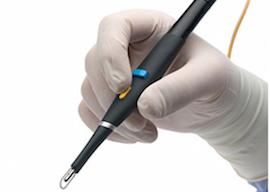Andy Boyce is obsessed with sustainability. He drives an electric car to work and powers his home with a combination of micro-hydroelectricity, solar photovoltaic, and solar hot water panels. He’s one of Continuum’s talented engineers, which might explain his propensity to build smart systems and think more holistically about his impact on the environment. But I wanted to learn a bit more about why Andy was so passionate about sustainability—and especially his car.
What originally got Andy interested in alternate means of energy consumption? His brother, an MIT Sloan graduate working in management consulting, quit twelve years ago to open a sustainable winery in Maryland, Black Ankle Vineyards. The solar powered biodynamic winery’s ecosystems run on the resources the team has locally; the tasting and barrel storage buildings are built using rocks, timber and straw bales harvested from the farm. Organic fertilizers come from the livestock, the tractors run on locally sourced biofuel, and geothermal energy is extracted from a small pond on-site.
This got Andy thinking about making more productive use of his own nearby resources; his home in Hopkinton has a waterfall in the backyard, which, with a little bit of creative thinking and lot of research, he leveraged to pump hydro-electric power into his home. Originally, Andy enjoyed the white noise of a waterfall from an old textile mill in his backyard, which helped him sleep at night. When he learned that same body of water, a part of the Sudbury River, used to power a 5-story mill that made blankets for the civil war, he got curious about its potential to provide sustainable energy. (Andy would like to thank Google—the idea for home scale hydro would have died on the vine if it were not for their search engine.)
He learned he was sitting on an energy source capable of providing energy to nearly 30 homes, but due to regulations by the Federal Energy Regulatory Commission (FERC) and the fact that Massachusetts does not consider hydro-electric energy a form of renewable energy, he would not be able to push this energy back to the grid or sell it to the local utility. Luckily, Andy’s plan to power his own home was not derailed; it’s still possible for him to create electricity, it just needs to be entirely consumed on site. What to do with it?
So why did Andy buy the electric car? Seems pretty clear: he has carbon and cost-free electricity available and he’d been interested in the vehicle for a while. Between the $2,500 Massachusetts MOR-EV rebate program and the Federal $7,500 tax incentive, it was a no-brainer. Massachusetts now has a rebate program that will pay half the cost of an EV (electric vehicle) charging station for employers with more than 15 employees. Andy is hoping Continuum could take advantage of the program.
His Chevy Volt runs on electricity alone for 40 miles, and has a 9-gallon gas tank to fuel the “range extending” gas engine. The fuel economy? Andy’s lifetime average is currently 147 miles per gallon.electric car
The Volt turns some heads when it’s parked and charging outside the local chain of the 99 Restaurants. They provide not only free charging but a premium parking spot as well. With his 37 mile round trip commute to work, the Volt can be gas free all week, but unlike a pure EV, he can rely on gas and still take a trip up to Solarfest in Vermont on weekends.
Andy’s next sustainability project is to convert his heating system to geothermal. Why not electric heat? With electric heat, the quantity of energy put in is the same as the energy that is taken out. A geothermal system has a Coefficient of Efficiency(CoF) of as much as 5—so one can put in 100 watts of electricity and get 500 watts of heat out. It’s also a reversible process, meaning those 500 watts could be cooling in the summer
Each smaller project Andy undertakes contributes to his making a larger impact overall. And my instinct is he also really enjoys them.




